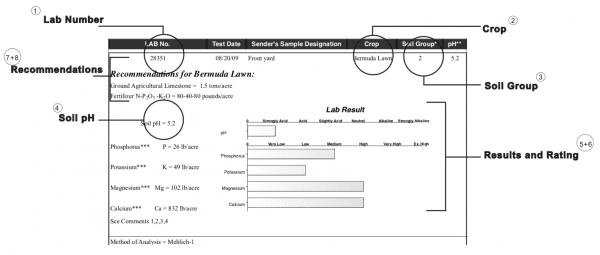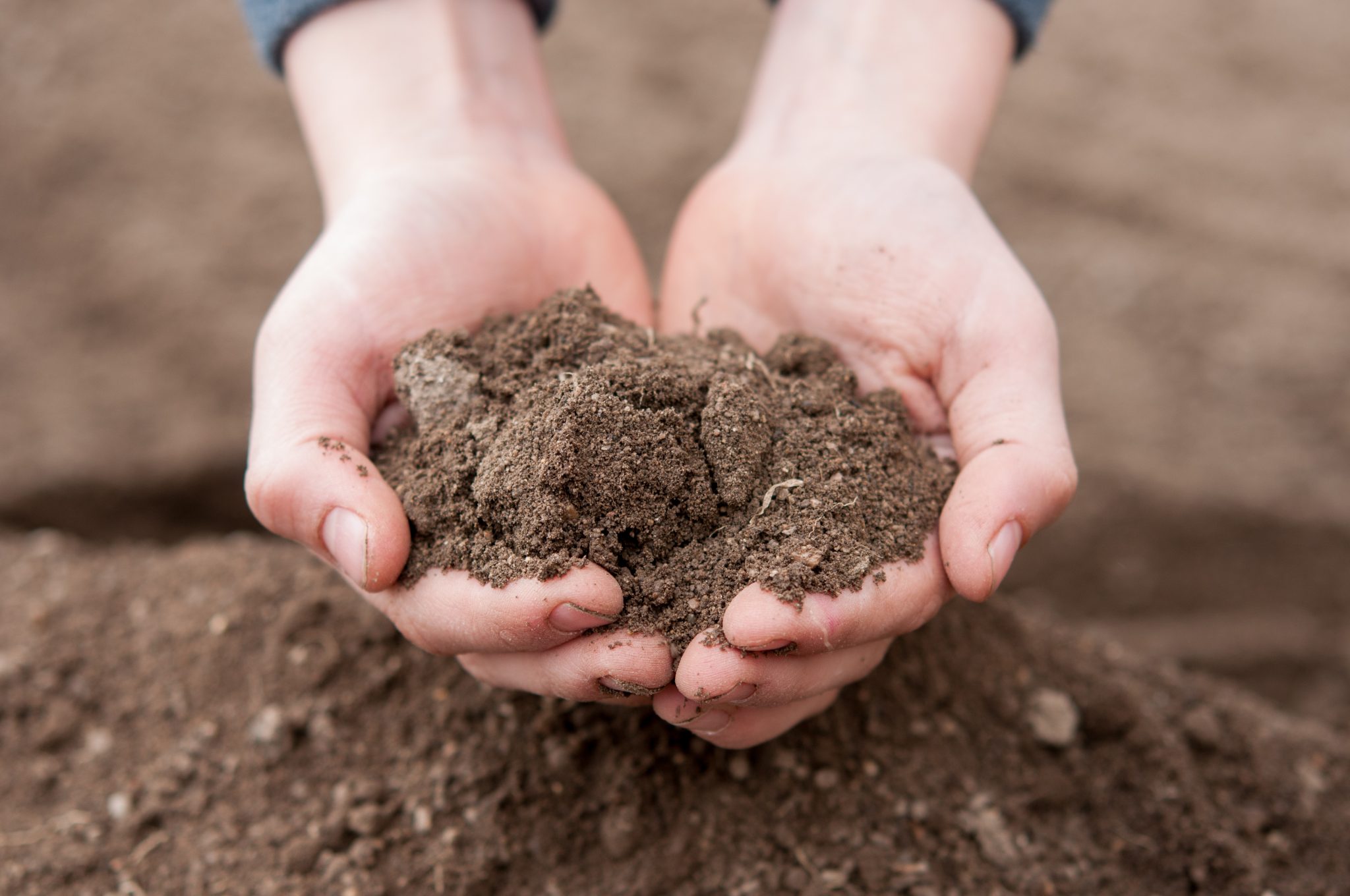Landscaping

The Auburn University Soil Testing Laboratory report includes: your intended crop(s), the soil group your sample belongs to, soil pH, results/extractable nutrients, nutrient rating, lime and fertilizer recommendations, as well as comments specific to your crop. Be able to interpret your soil sample test results and recommendations with clear, detailed figures.
After you submit a soil sample to the Auburn University Soil Testing Laboratory, you will receive a report that includes the test results and recommendations based on those results. The appearance of the report will depend on the number of samples you submit and the type of plants you are growing.
Graphics Report
Generally, if you submit fewer than four soil samples and you are growing a garden, shrubs, lawn, etc., you will get your report back in a graphics format (Figure 1). Each sample will be printed on a separate sheet of paper, and the results will be easy to interpret from the printed graph.
Table/Text Report
If you submit four or more samples—this typically applies only to large-scale farmers—your report will be in a table/text format (Figure 2). This format allows for several sample reports to be printed on each page.
You can request to have your report sent via e-mail or regular mail, or both, and you can request text, graphic, spreadsheet, and/or xml formats. After your soil sample has been tested, you can also access your results on the Internet at http://www.aces.edu/anr/soillab/. Here you can change your crop and report format as often as you wish.
Soil Sample Information
1. Lab Number
This is the number the laboratory uses to keep up with each sample.
2. Crop
These are the crops or plants that you indicated you plan to grow. Sometimes, several crops will be listed if the laboratory is not certain which crop you intend to grow. Note that different types of plants have different recommendations; for instance, specific types of lawn grass must be identified (e.g., bermuda, centipede). Some plants may be grouped together (e.g., “vegetable garden” and “organic vegetable garden”) because the entire area will probably be fertilized the same regardless of the type of plants grown.
3. Soil Group
The type of soil you send us is important because it affects how the laboratory interprets the results.
- Group 1. Sandy soils (low nutrient holding capacity)
- Group 2. Loamy soils and light clays
- Group 3. Fine-textured, clayey soils and soils high in organic matter
- Group 4. Fine-textured, clayey soils of the Alabama Black Belt region (very high nutrient holding capacity)
4. Soil pH
This is the level of acidity or alkalinity in the soil.
- pH > 7.3 = alkaline
- pH 6.6–7.3 = neutral
- pH 5.8–6.5 = slightly acid; ideal for most crops
- pH 5.0–5.7 = very acid; ideal for acid-loving plants
- pH < 5.0 = strongly acid; lime recommended for all crops except blueberries
5. Results
These values are extractable nutrients expressed as pounds per acre, assuming that a topsoil weighs 2 million pounds per acre (e.g., parts per million × 2 = pounds per acre).
6. Nutrient Rating
On a graphics report, the rating is shown by the length of the horizontal bar graph. On a table/text report, a letter is used for the rating:
VL = very low; fertilization needed.
Crop yields could be less than 50 percent of potential without this nutrient.
L = low; fertilization needed.
Crops yields could be 50 to 75 percent of potential without this nutrient.
M = medium; some fertilization recommended. Crop yields could be 75 to 100 percent of potential without this nutrient.
H = high; nutrient adequate for the crop, although some fertilizer may be applied to high-value crops. Yield potential is 100 percent.
EH = extremely high; excessive nutrient level could be damaging to the crop or the environment.
The rating depends on the soil group and the crop. For example, a P value of 25 would be low (L) for vegetables but high (H) for peanuts on a group 2 soil.
7. Lime Recommendation
Lime recommendations are given in tons per acre of ground agricultural limestone. For gardens, lawns, shrubs, and flowers, there will be a comment that notes, “One ton of limestone per acre is approximately equivalent to 50 pounds per 1,000 square feet.” If you need help making the conversion for your specific area, use the lime calculator found on the Internet at http://www.aces.edu/anr/soillab/limecalculator.php.
8. Fertilizer Recommendation
Fertilizer recommendations are given in pounds per acre per season of N-P2O5-K2O (Nitrogen-Phosphate- Potash). For gardens, lawns, shrubs, and flowers, the comments give examples of fertilizer materials that could be used on a smaller area.
A single-match chemical fertilizer calculator is provided online at http://www.aces.edu/anr/soillab/chemfertilizercalc.php; or, visit http://www.aces.edu/anr/soillab/orgfertilizercalc.php for an organic fertilizer calculator.
Keep in mind that the three numbers on a bag, box, or bottle of fertilizer (e.g., 13-13-13 or 27-3-4) represent the percentage of N-P2O5-K2O in that fertilizer.
9. Comments
Comments are important because they give specific instructions about the crop you are growing. For home grounds, comments also give examples of fertilizers that will satisfy the recommendations. Supplemental fertilization recommendations may also be given in the comments.

Figure 1. Sample graphics report. Bars indicate the relative concentration of available plant nutrients in soil.

Figure 2. Sample table/text report.
For more information, visit the Auburn University Soil Testing Laboratory online at http://www.aces.edu/anr/soillab.
Charles Mitchell, Extension Agronomist, Agronomy and Soils, Auburn University, and Gobi Huluka, Associate Professor, Auburn University.
Reviewed 2022, Home Soil Testing: Using The Soil Test Report, ANR-0006-B

